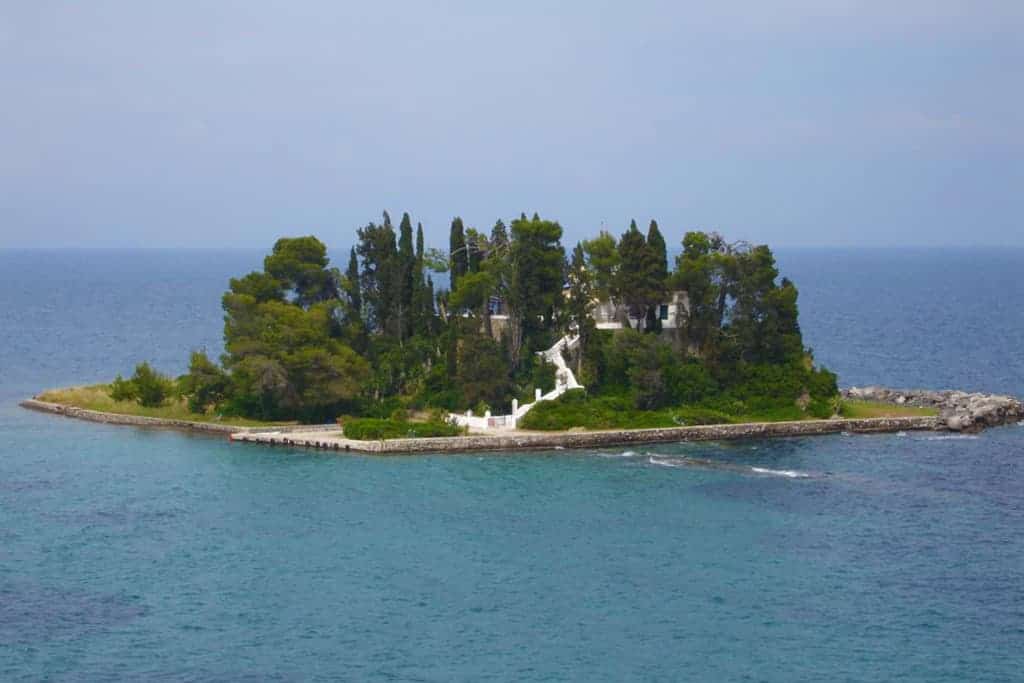mouse (E)
souris(F)
topo (I)
ratón (S)
MAUS (G)
mouse island, corfu, greece
Known as Mouse Island in English, the islet’s Greek name is Pontikonisi Islet, named after the Greek word “pontikos”, which means mouse. The islet is located off the eastern coast of Corfu, south of the international airport. The main building on the islet is the Byzantine chapel of Pantokrator (meaning Almighty or All-powerful) which dates from the 11th or 12th century and is open to the public once a year on August 6th.

It’s likely named Mouse Island because of its small size but it could also be because the path to the chapel looks a little like a mouse’s tail. Mouse Island is part of Homer’s epic poem, the Odyssey, which tells of the Greek hero Odysseus’ 10-year journey returning from the Trojan War. According to Greek mythology, Mouse Island is the ship of Odysseus that was turned to stone by Poseidon as punishment for disrespecting the god.
Mouse Island is also known for being the inspiration for a famous series of five paintings by a Swiss painter, Arnold Böcklin, who lived from 1827 to 1901. The series of paintings is referred to as Die Toteninsel in German, or The Isle of the Dead in English, with each painting referred to with the name of the city where the painting is now located. The paintings, produced between 1880 and 1886, all depict a similar scene of a small Mediterranean island with tombs and a stand of cypress trees, with stone cliffs in the background. Some think Mouse Island was combined with the rocky island of Strombolicchio, near the volcano Stromboli in Sicily, to create the images. A boat containing a coffin and a person dressed in white is being rowed toward the islet. The scenery depicted in each painting of the series is progressively darker and sadder. Version three, located in Berlin, was owned for a time by Adolf Hitler (well, of course it was) and version four was destroyed during World War II.
The Isle of the Dead paintings have inspired many other artistic creations: 1) a symphonic poem by Sergei Rachmaninoff, who only saw a black and white version of the painting; 2) a Salvador Dalí painting entitled The Real Picture of the Isle of the Dead by Arnold Böcklin at the Hour of the Angelus, which pictures an empty beach; 3) a 1945 horror film titled The Isle of the Dead starring Boris Karloff; 4) the third act of the 1951 movie The Tales of Hoffman by Michael Powell and Emeric Pressburger, set on a Greek island which is a replication of the Isle of the Dead; and, last, but certainly not least, 5) the surrealistic biomechanical dreamscapes of another Swiss artist, H.R. Giger, most famous for designing Sigourney Weaver’s nemesis, the title character of the film Alien, described in Entertainment Weekly as “an acid-bleeding, razor-toothed, overgrown cockroach with an ugly practice of gestating its offspring in human hosts”.
Let’s end on a positive note, shall we? In 1888, Böcklin painted Die Lebensinsel or Isle of Life, which also shows a small island but this one showing happy people and activities. The first version of Isle of the Dead and the Isle of Life can both be found at the Kunstmuseum Basel, Switzerland, the oldest public art collection in the world.
